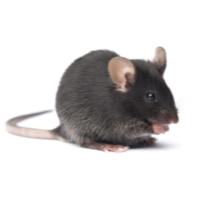Regular physical activity prevents chronic pain
One article on PainSci cites Sluka 2013: The Trouble with Chairs

PainSci notes on Sluka 2013:
This elaborate test of mice showed that they were less sensitive to certain kinds of pain if they had gotten more exercise. Specifically, regular exercise protected them from pain caused by exercise (no surprise there), but also — a little more interesting — pain caused by injecting carageenan (which causes inflammation). So exercise probably protects mice from the pain of carageenan injections — does that mean it will protect humans from other kinds of pain? We can’t quite go that far based on the this research. Nevertheless, it’s suggestive, and I’m inclined to agree with the authors: “physical inactivity is a risk factor for development of chronic pain and may set the nervous system to respond in an exaggerated way to low-intensity muscle insults.”
original abstract †Abstracts here may not perfectly match originals, for a variety of technical and practical reasons. Some abstacts are truncated for my purposes here, if they are particularly long-winded and unhelpful. I occasionally add clarifying notes. And I make some minor corrections.
Chronic musculoskeletal pain is a significant health problem and is associated with increases in pain during acute physical activity. Regular physical activity is protective against many chronic diseases; however, it is unknown if it plays a role in development of chronic pain. The current study induced physical activity by placing running wheels in home cages of mice for 5 days or 8 wk and compared these to sedentary mice without running wheels in their home cages. Chronic muscle pain was induced by repeated intramuscular injection of pH 4.0 saline, exercise-enhanced pain was induced by combining a 2-h fatiguing exercise task with a low-dose muscle inflammation (0.03% carrageenan), and acute muscle inflammation was induced by 3% carrageenan. We tested the responses of the paw (response frequency) and muscle (withdrawal threshold) to nociceptive stimuli. Because the rostral ventromedial medulla (RVM) is involved in exercise-induced analgesia and chronic muscle pain, we tested for changes in phosphorylation of the NR1 subunit of the N-methyl-d-aspartate (NMDA) receptor in the RVM. We demonstrate that regular physical activity prevents the development of chronic muscle pain and exercise-induced muscle pain by reducing phosphorylation of the NR1 subunit of the NMDA receptor in the central nervous system. However, regular physical activity has no effect on development of acute pain. Thus physical inactivity is a risk factor for development of chronic pain and may set the nervous system to respond in an exaggerated way to low-intensity muscle insults.
This page is part of the PainScience BIBLIOGRAPHY, which contains plain language summaries of thousands of scientific papers & others sources. It’s like a highly specialized blog. A few highlights:
- Cannabidiol (CBD) products for pain: ineffective, expensive, and with potential harms. Moore 2023 J Pain.
- Inciting events associated with lumbar disc herniation. Suri 2010 Spine J.
- Prediction of an extruded fragment in lumbar disc patients from clinical presentations. Pople 1994 Spine (Phila Pa 1976).
- Characteristics of patients with low back and leg pain seeking treatment in primary care: baseline results from the ATLAS cohort study. Konstantinou 2015 BMC Musculoskelet Disord.
- Effectiveness and cost-effectiveness of universal school-based mindfulness training compared with normal school provision in reducing risk of mental health problems and promoting well-being in adolescence: the MYRIAD cluster randomised controlled trial. Kuyken 2022 Evid Based Ment Health.